While the debate continues in many Western countries (including Australia) about the place of the Muslim womens’ veil in society, the deluge of sensational misinformation about headscarves is perhaps inevitable. Much of this stems from a lack of understanding about the veil, along with terminology rooted in languages other than English. With this considered, we attempt to set the record straight on the five most common types of veils, and maybe debunk some myths too.
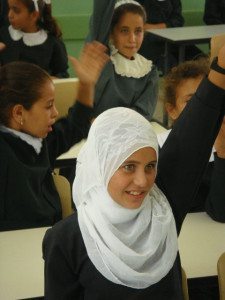
Palestinian girl in hijab (Image: Al Jazeera, Wikimedia Commons)
Hijab
Hijab is an Arabic word meaning “veil”, “screen” or “cover”. It gets used in two senses; firstly as an Islamic requirement for people (especially women) to “cover” themselves. Secondly, the word “hijab” is often used to describe the most common type of veil, a triangular piece of fabric which can be either tied under the neck or fastened with pins.
The triangular-fabric hijab is common in many countries; from Indonesia and Malaysia to Egypt and among many Muslim women living in the west. The popularity of this headscarf has resulted in different variations in style – some longer, some shorter, some knotted to the side, some giving a layered, ‘wrapped’ appearance, some exposing the neck and so on.
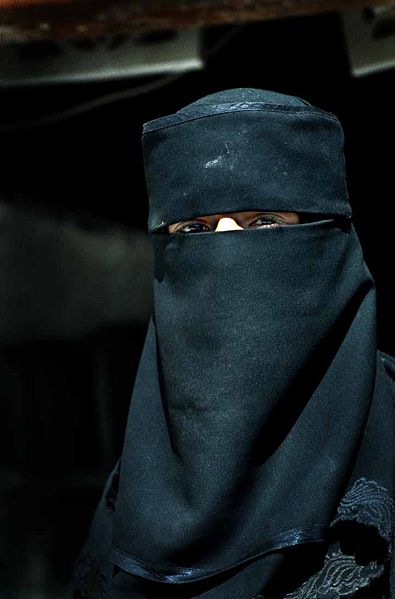
Yemeni woman in niqab (Image: Steve Evans, Wikimedia Commons)
Niqab
Niqab translates from Arabic as “mask”, and refers to the ‘face veil’. It is a separate piece of fabric which is tied over the hijab (or other head covering) and exposes only the eyes.
It is common in many Arab nations, especially the Arab Gulf states of Saudi Arabia, Qatar, UAE, Yemen and Oman. It is also increasingly common in South Asia: Afghanistan, Pakistan, India and Bangladesh.
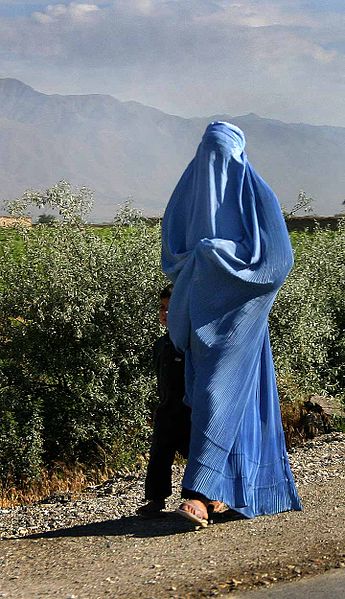
Afghan woman wear a burqa (Image: Steve Evans, Wikimedia Commons)
Burqa (Burka)
Burqa (or burka) is a corruption of the Persian word purdah, which means “curtain” or “veil”. It refers to a full body garment which is shaped somewhat like a shuttlecock, and leaves a thin mesh for the eyes. This allows the wearer to see out, but restricts others’ view of their eyes; it is the most covering of Muslim womens’ garments. In the West, the word ‘burqa’ is often incorrectly used to describe any veil which covers the face.
Burqa is common in Afghanistan, and is increasingly common in parts of Pakistan.
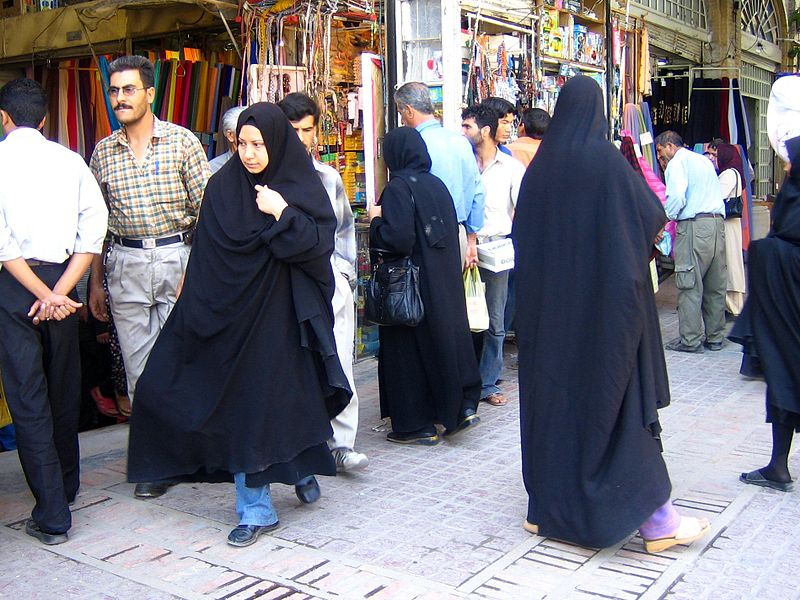
Chador worn in Iran (Image: Zoom Zoom, Wikimedia Commons)
Chador
Chador literally means ‘tent’ in Persian language, and is a large piece of fabric (usually black) which envelops the whole body. Like wearing a sheet or cloak over the head (necessitating the wearing of other clothes underneath), it must be constantly held together with the wearer’s hand. It became known worldwide after Iran’s revolution in 1979, when its use became mandatory in public.
Chador is most common in Iran, but has lost popularity in recent years, partly due to its cumbersomeness.
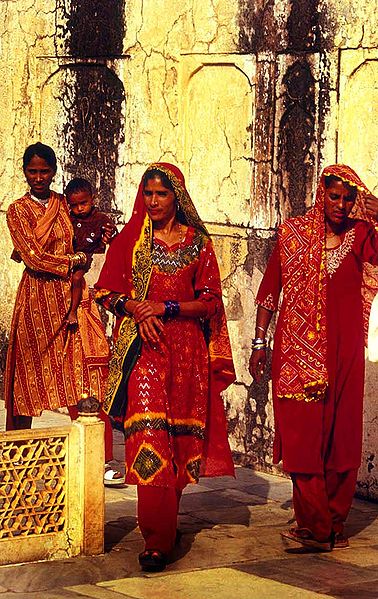
Dupatta worn over traditional garments in Jaipur, India
Dupatta
Dupatta is a simple, long scarf worn by many women in the subcontinent. Draped over the head, dupatta creates a loose fitting headscarf of sorts. It is usually worn together with the shalwar kameez, a loose fitting pant-tunic combination of varying lengths and fittings. Although the shalwar kameez can be considered a fashion item and is worn by women of various faiths, it is more commonly associated with the Indian Muslim tradition (while Hindu fashion is commonly associated with the sari).
Colourful dupatta and shalwar kameez are very common among the Muslim women of Pakistan, India, Bangladesh and Sri Lanka, and is also fairly common among non-Muslim women of those regions.
Other hijab need-to-know
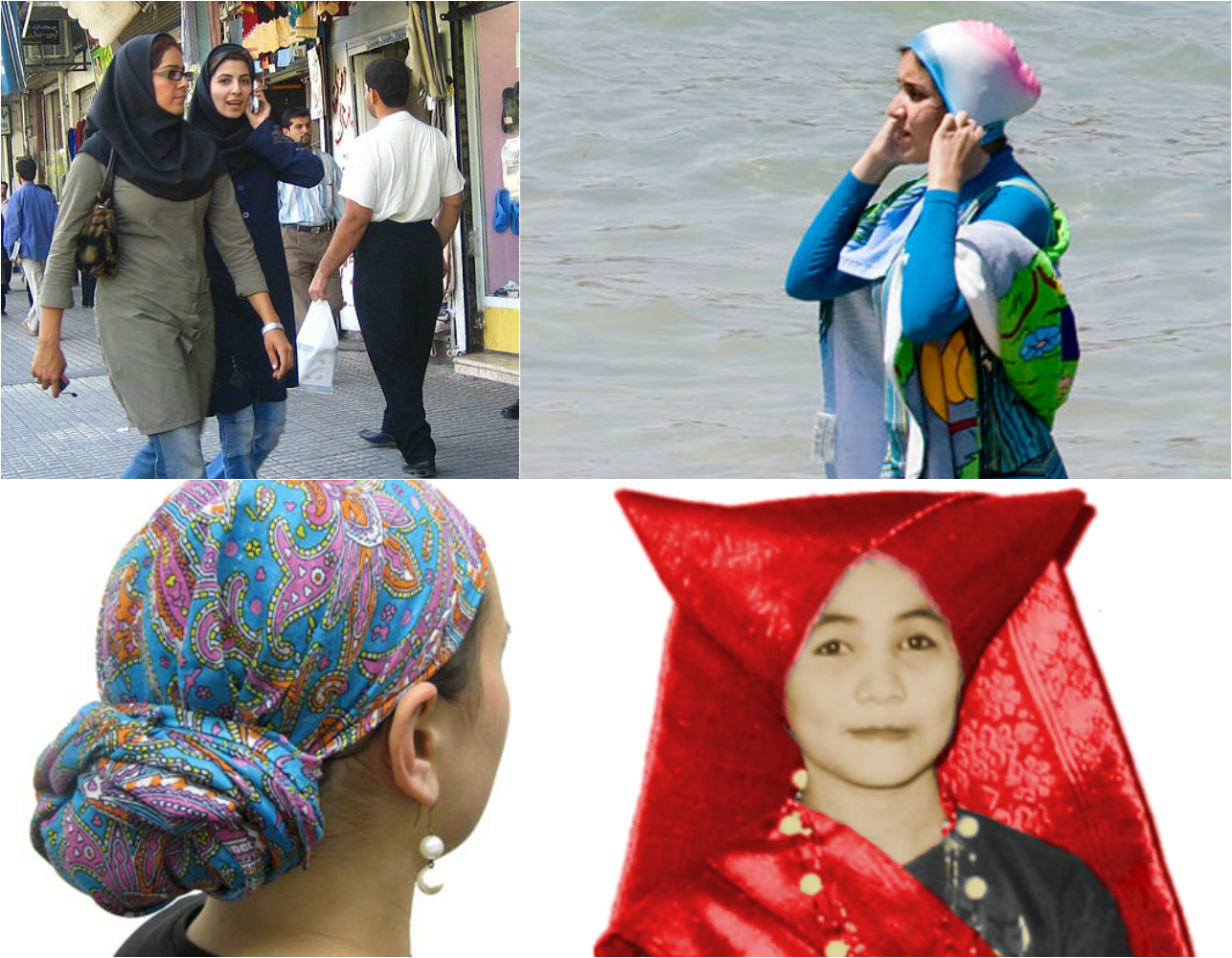
Clockwise from top left: Iranian girls wearing loose headscarves with manteau, a long jacket/coat (Image: Zoom Zoom), the ‘Burkini’ (Image: Cool Burkini), Muslim Minangkabau lady from the Indonesian island of Sumatra with traditional non-Islamic headgear (Image: Michael J Lowe), and a tichel style head covering popular among some Muslim Turkish women (Image: Anna Gold)
- Various styles of hijab are used around the world (see above), although for many, their compliance with Islamic ruling is the subject of intense and often heated debate.
- Many Muslim women do not cover their heads, and this is not necessarily a reflection of their devotion (or lack thereof).
- Women wear headscarves for a variety of reasons – religion, modesty, social expectations, fashion… the list goes on. Nuns wear headscarves for their religion, but they’re not Muslim. Many field workers wear headscarves to protect themselves from the elements. We’ve even heard of people being thankful for the headscarf when they’re having a bad-hair day! (Although, to be fair, that’s not their basis for wearing a hijab!)
- There is a growing market for ‘modest attire’ in Western nations; that is, non-revealing clothes which can be worn to work or fancy functions by either Muslims or non-Muslims. See our review of the Faith Fashion Fusion exhibition earlier this year.
- Many Muslim women consider the hijab to be liberating. Many feel that while wearing it, they are judged on the content of their character, rather than their appearance. In conservative societies which are divided into public (male) and private/domestic (female) spheres, the hijab allows a woman to move freely in public while maintaining her privacy.
- Some countries have made covering the head or face in pubic illegal.
- Only in Iran and Saudi Arabia is a head covering mandatory in public.
- Many (if not most) Muslim schools of thought teach that women must show their face while praying – requiring the removal of any face veil before prayer.
- In most Muslim-majority countries, facial identification is performed at airports and other security-sensitive places by having a screen at the checkpoint, behind which women are required to show their face or be patted down in the presence of a female officer.
- Islam also provides hijab (covering) rules for men; many Muslim scholars agree that the minimum requirement is to be covered from the navel to the knee (even when swimming).
- For a lot of Muslim women, the headscarf is not a major issue, the same way that a work uniform is not a major issue for many of those who are required to wear it. Many (if not most) wear it by choice. A lot of Muslim women spend their days thinking about depressingly familiar things like work, family duties or the weather – not what they are wearing. Many are quite baffled at how much anxiety and debate surrounds a simple piece of fabric.
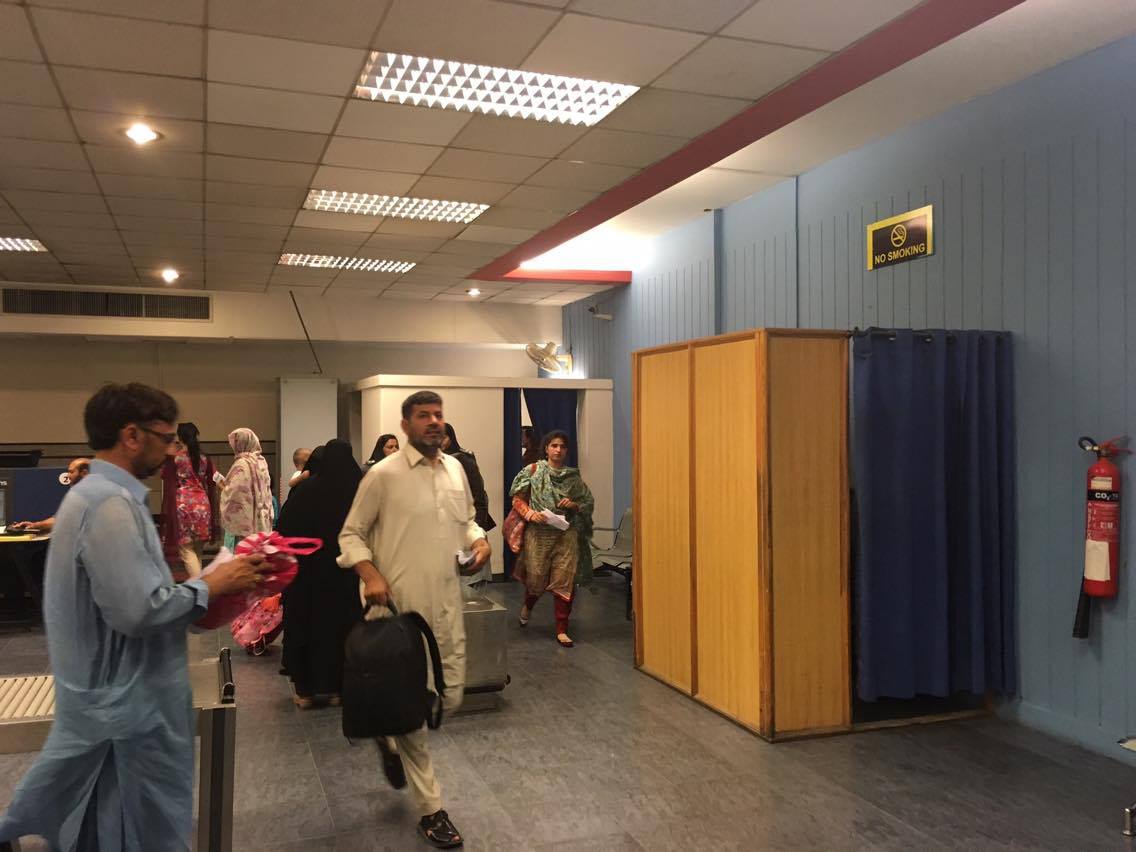
At Islamabad airport, women wearing niqab or burqa use the small rooms to the right and background of this photo for identification and security screening.
I hope this article has gone some way to debunking some myths about head coverings, and may it better inform the current round of debate being held.

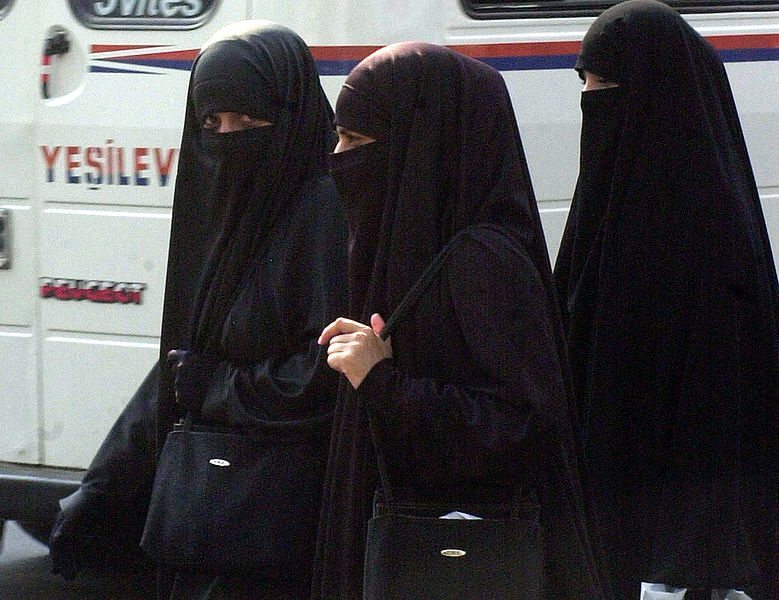
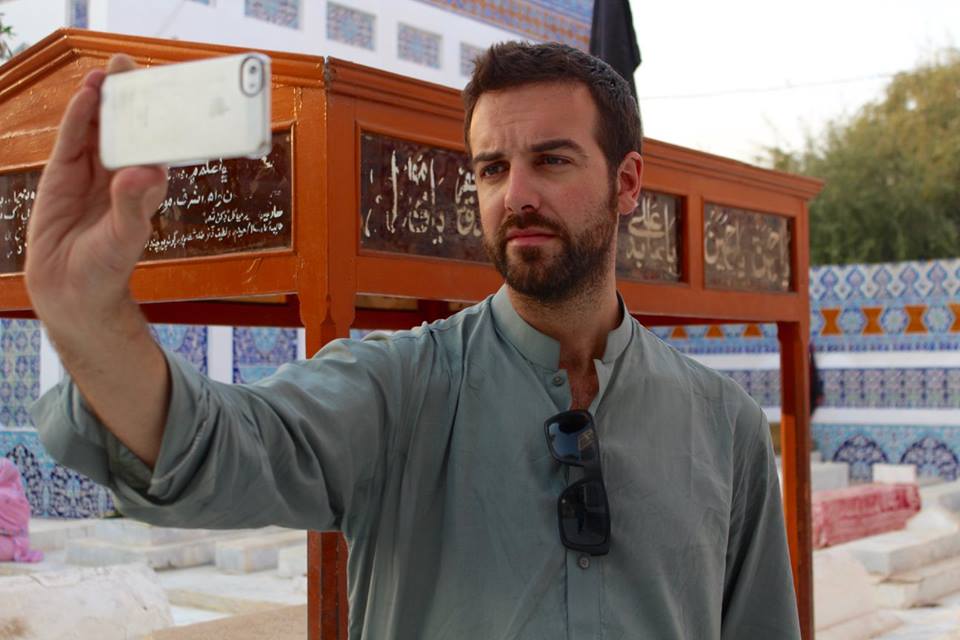

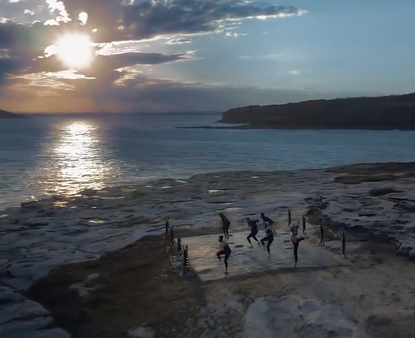
Good one bro!! You might have unveiled a few things. 🙂
Thanks for the support Jawad! Lets hope this contributes something to the debate 🙂
Perfectly explained, Tim! I was wondering if these women are not hot wearing such clothes in a hot weather.
Thanks for the appreciation Agness! A woman who wears hijab might be better placed to answer that question, but I know that “modest” clothes are often made to suit the conditions, much like the difference between light ‘summer’ and heavy ‘winter’ fabrics that people wear.
Thank you for a very interesting article. In this time where too much information is biased or incorrect it is good that someone takes the time to put the correct information out there so people can join in the debate and make up informed choices. Just for info I’m a revert Muslim and I wear the hijab by choice and I do find it liberating and a very useful barriers against an overly sexual society where women are more and more sexualized at all levels of society. It is a blunt statement to others that people should take me for who I am and not what I look like. Those who are not willing to go beyond my look are not so interesting to me either most of the time.
Thank you for reading Jameela! It’s great to hear from another Muslim’s perspective here, especially a revert 🙂 It’s definitely important that people know what they are talking about. An objectionable opinion (regardless of what it is) is so much more objectionable if it is uninformed!
Thanks Tim. I will admit that I did not actually know the difference in headgear and veils. Interesting post, thanks for sharing.
Thanks for reading Anna!
As someone who knows the difference between these different types of headscarves, it is really frustrating when I see words like ‘burka’ thrown around in the media, referring to things that aren’t a burka at all (eg – the ‘niqab’, or ‘face veil’).
I totally understand that people who aren’t Muslim/have little contact with Muslims/don’t speak Arabic or Persian, mightn’t understand the differences between the various veils, but is a shame to see people arguing for or against it when they don’t understand the meaning of some of the words!
A thoroughly informative account of the different types of “headgear”. If only the people who say they are part of “Team Australia” realised that we are all in fact part of Team Humanity. I find it interesting that those on “Team Australia” have ignored the fact that nuns walk our streets in different types of clothing.
Thanks for reading, glad you found it informative! 🙂
Great post – I had no idea what the differences are between the various head pieces until now. Do female travelers to these areas typically wear a headpiece? I do tend to dress as much as I can like a local when I travel. Although, some areas are easier than others, haha. Of course, I’ve never traveled to this part of the world!
Thanks for reading Katie! Female travellers only legally have to cover their heads in Iran and Saudi Arabia, however many women choose cover their heads anyway when travelling to countries like Pakistan and Yemen; they do it as a matter of respect, and also to blend in a little bit more. Of course, it’s a requirement to cover the head when entering a mosque, in any country.
hey Tim!
Wow great article! I love how you said that many, if not most, Muslim women are more concerned about work, family, life rather than a piece of fabric! So true.
In Iran, Nick and I had so many questions about the wearing of the headscarf and how the women there felt about it…to be honest, they didn’t want to talk about it because they hated being reminded that it’s the law to wear it in public. Even tho these women were non Muslims, many Muslim women aren’t overly conservative and would prefer to dress a different way.
Great write up and explanation of the various headscarves…love the redesign too 🙂
Thanks Dariece! The situation in Iran is doubly complex because of the legal requirements and the internal socio-political dynamics. Truly intriguing!
And glad you like the design too! 🙂
This is a great and informative post, Tim! The Western Media often forget the simple fact that women are not forced to wear Hijab, whereas choose to dress this way for some personal reasons. I think everyone have the right to wear what they want despite of any prejudice.
Thanks for reading Elena! It’s certainly a very complex issue!
Wow! There are so many different kind of Muslim veils of which I kind of new about it but for some reasons I didn’t realize there were actually that many. This is a very interesting and well detailed read, thanks 🙂
Thanks for reading Franca! Yep – there are certainly many styles, and the article really just scratches the surface!
What a great and useful idea for a post!! I spent part of my childhood in the Middle East and have quite a few Muslim friends now so I had a pretty good understanding of the different terminology but have lost count of the number of friends of mine have asked what the difference is between the different types of coverings. Really interesting post!
It’s really not helped by the fact that all the terminology is in foreign languages. If it was confusing because of the unfamiliarity with the various styles, it is further complicated by the names for them! Thanks for reading and commenting Shikha! 🙂
I like this article and thanks for writing it. I hope many people will read this. And I just want to stress that in this time and age, yes, we women wear the hijab by choice. is does get warm when wearing it in warm climate, but the same goes for wearing jeans and socks right? it’s nothing we cannot handle. i personally like wearing my hijab. it covers parts of my body and makes me feel free to move about and run around. a hijab covers the cleavage when we bow down and covers our bosoms when we move. so that people don’t see them sway about like the Baywatch TV series. we can do anything we want just like any women without hijab can do. what we do or do not do is by choice. we can play soccer or swim. our religion never said we needed to wear a tent when we play sports or swim. sometimes those extremist you see are just rules made up by humans. not by our religion nor the Quran.
Thanks for contributing Fauziah! You’re right, so much of the debate is about perception, and unfortunately so little is based in fact or experience for many people.
FYI the Minangkabau headgear has nothing to do with Islam. This is a part of the traditional outfit, and it goes along way before the people of Minangkabau people became Muslims. It symbolises the horns of a water buffalo, the same with the style of the roof of their houses. So it’s not a hijab of some sort.
Very true – I had been misinformed about that. Thank you for bringing it to my attention. I guess the person who related the information to me was making a point about the headgear serving the purpose of a hijab after conversion to Islam. However as you say, it has its roots outside of Islam, and is not really related to it.
I’ve fixed the caption in question now – thank you for your input.
Great effort sir…lots of respect and love from pakistan <3
Thank you for reading 🙂
What a well-written article. Thank you for the great read!
Thanks for reading 🙂